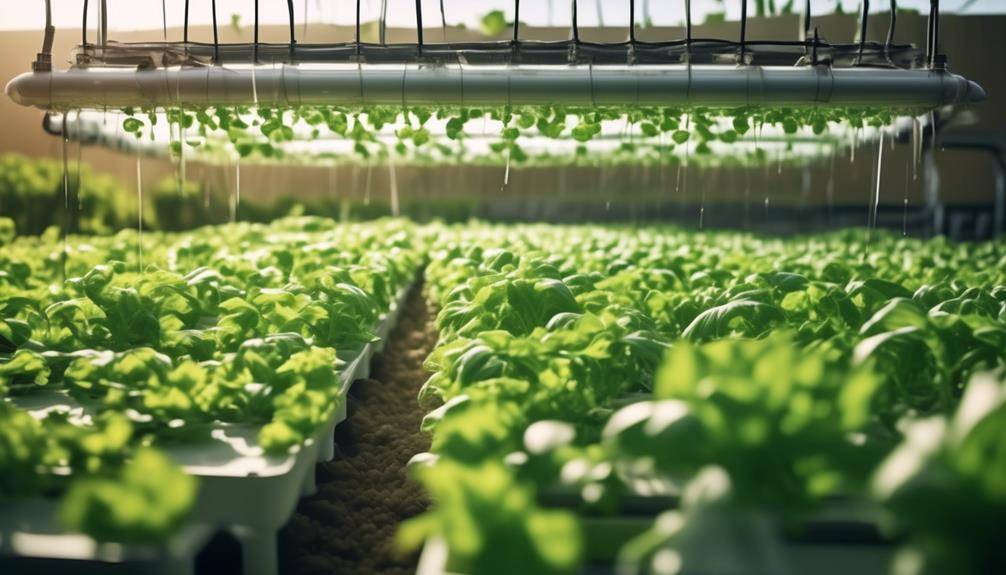The Important Future of Plant-Based Protein

Future of Plant-Based Protein; Did you know that the global plant-based protein market is projected to reach a value of $14.32 billion by 2027? With the increasing concerns about sustainability, health, and animal welfare, more and more people are turning towards plant-based alternatives for their protein needs. But what does the future hold for plant-based protein? Well, you might be surprised to learn about the innovative sources of plant-based protein that are being developed, the advancements in technology that are making them more accessible and appealing, and the potential health and environmental benefits they offer. So, let’s explore together the exciting trends and opportunities that lie ahead in the world of plant-based protein.
Growing Demand for Plant-Based Protein
The demand for plant-based protein is rapidly increasing due to a growing awareness of the health and environmental benefits associated with a plant-focused diet. Consumer preferences towards plant-based protein have shifted as people become more conscious of the impact of animal agriculture on the planet. Plant-based proteins are seen as a sustainable alternative that can help reduce greenhouse gas emissions, conserve water resources, and mitigate deforestation.
One of the challenges in meeting the growing demand for plant-based protein is the limited availability of alternative protein sources. While soy and wheat have traditionally been the primary sources of plant-based protein, there is a need for diversification to meet the evolving preferences of consumers. This has led to an increased focus on developing protein-rich alternatives using ingredients such as peas, lentils, chickpeas, and algae. These sources not only offer nutritional benefits but also have a lower environmental footprint.
Another challenge lies in scaling up production to meet the rising demand. The production and processing infrastructure for plant-based protein are still in their early stages, and there is a need for significant investment and technological advancements. The development of efficient extraction methods, improved processing techniques, and optimized supply chains will play a crucial role in meeting the increasing demand.
Furthermore, the taste and texture of plant-based protein products have also been identified as key factors influencing consumer acceptance. To address this, food manufacturers are investing in research and development to create plant-based alternatives that closely mimic the taste and texture of animal protein. Advances in food science and technology are enabling the creation of innovative plant-based products that not only cater to consumer preferences but also provide the necessary nutritional profile.
Innovative Sources of Plant-Based Protein
What are some innovative sources of plant-based protein that can meet the growing demand? As the demand for plant-based protein continues to rise, researchers and food scientists are exploring novel plant-based protein sources to provide alternative protein options for consumers. These innovative sources offer a sustainable and environmentally friendly way to meet the increasing protein needs of the growing population.
One such alternative protein option is algae. Algae are rich in protein, containing essential amino acids and minerals. They are also highly sustainable, requiring minimal water and land resources for cultivation. Algae can be processed into various forms, such as powder or flakes, and incorporated into a wide range of food products, including protein bars, beverages, and meat substitutes.
Another promising source of plant-based protein is legumes. Legumes, such as lentils, chickpeas, and black beans, are not only high in protein but also packed with fiber and other essential nutrients. They can be used to create plant-based meat alternatives, such as burgers and sausages, that mimic the texture and taste of traditional meat products.
In addition to algae and legumes, insects are emerging as a sustainable and protein-rich food source. Insects, like crickets and mealworms, are highly nutritious, containing all essential amino acids and minerals. They can be ground into a fine powder and used as an ingredient in protein bars, snacks, and even pasta.
Furthermore, researchers are exploring the potential of underutilized crops, such as quinoa, amaranth, and hemp, as alternative protein sources. These crops are not only rich in protein but also contain other beneficial compounds, such as antioxidants and omega-3 fatty acids. Incorporating these crops into the food system can provide a diverse range of plant-based protein options.
Advancements in Plant-Based Protein Technologies
As the demand for plant-based protein continues to grow, advancements in plant-based protein technologies are revolutionizing the food industry. These advancements are enabling the development of sustainable farming methods, as well as improving the flavor and texture of plant-based protein products. Here are three key advancements that are shaping the future of plant-based protein:
- Sustainable farming methods: Traditional methods of agriculture often require large amounts of land, water, and fertilizers, leading to environmental degradation. However, advancements in plant-based protein technologies are allowing for the development of more sustainable farming methods. For example, vertical farming techniques and hydroponics enable the production of plant-based proteins in controlled environments, reducing the need for vast amounts of land and water. These methods also minimize the use of pesticides and fertilizers, making plant-based protein production more environmentally friendly.
- Flavor improvements: One of the challenges of plant-based protein products has been replicating the taste and texture of animal-based proteins. However, advancements in plant-based protein technologies have led to significant improvements in flavor. Scientists and food technologists are now able to extract and isolate specific compounds from plants that contribute to meaty flavors, such as umami. By incorporating these compounds into plant-based protein products, manufacturers are able to create products that closely mimic the taste of meat, appealing to a wider consumer base.
- Texture enhancements: Texture is another important aspect of plant-based protein products. Traditionally, plant-based proteins have been associated with a grainy or rubbery texture, which can be off-putting to some consumers. However, advancements in plant-based protein technologies have led to the development of new processing techniques that can improve the texture of plant-based proteins. For example, extrusion technology can be used to create plant-based meat alternatives with a fibrous texture that closely resembles animal-based meats. These advancements in texture enhancement are crucial in making plant-based protein products more appealing and satisfying to consumers.
Health and Environmental Benefits of Plant-Based Protein
Advancements in plant-based protein technologies offer significant health and environmental benefits that are transforming the way we approach protein consumption. The shift towards plant-based protein sources is driven by the numerous health benefits associated with this dietary choice. Plant-based proteins are low in saturated fat and cholesterol, making them heart-healthy options. They are also rich in fiber, which aids in digestion and helps maintain a healthy weight. Additionally, plant-based proteins contain essential nutrients such as vitamins, minerals, and antioxidants that contribute to overall well-being.
In terms of sustainability advantages, plant-based protein production has a considerably lower environmental impact compared to animal-based protein production. Livestock farming is a major contributor to greenhouse gas emissions, deforestation, and water pollution. By choosing plant-based proteins, we can reduce these negative environmental impacts and promote a more sustainable future. Plant-based protein sources require less land, water, and energy to produce, making them more efficient and environmentally friendly.
Furthermore, plant-based proteins are less resource-intensive and have a smaller carbon footprint compared to animal-based proteins. The production of plant-based proteins requires fewer resources, including water and fossil fuels, leading to lower greenhouse gas emissions. This reduction in emissions helps combat climate change and preserve natural resources.
Future Trends and Opportunities in Plant-Based Protein Market
The plant-based protein market is experiencing promising future trends and opportunities for growth. As more people are adopting plant-based diets and seeking alternative protein sources, the demand for plant-based protein products is on the rise. Here are three key trends and opportunities in the plant-based protein market:
- Expansion of product offerings: Market competition is driving innovation in the plant-based protein sector. Companies are constantly exploring new sources of plant-based protein, such as pea, soy, rice, hemp, and even insects. This diversification of protein sources allows for a wider range of products to cater to different dietary preferences and requirements.
- Improved taste and texture: In the past, plant-based protein products were often criticized for their taste and texture compared to their animal-based counterparts. However, advancements in food technology and processing techniques have led to the development of plant-based protein products that closely mimic the taste and texture of meat. This improvement in sensory attributes is attracting a wider consumer base, including flexitarians and meat-eaters looking to reduce their meat consumption.
- Expansion into new markets: The plant-based protein market is not limited to just food products. Companies are exploring opportunities to incorporate plant-based proteins into other sectors, such as beverages, snacks, and supplements. This expansion into new markets allows for further growth and diversification of plant-based protein products, tapping into a wider consumer base.
Frequently Asked Questions
Are There Any Concerns About the Taste and Texture of Plant-Based Protein Compared to Traditional Animal-Based Protein?
Taste and texture concerns exist when comparing plant-based protein to traditional animal-based protein. However, advancements in food technology have allowed for the development of plant-based alternatives that closely mimic the taste and texture of animal-based protein.
How Does the Production of Plant-Based Protein Impact Land and Water Resources?
The production of plant-based protein has a lower impact on land use and water consumption compared to traditional animal-based protein. It is a more sustainable option that can help conserve natural resources.
What Are the Challenges Faced in Scaling up the Production of Plant-Based Protein to Meet the Growing Demand?
Scaling up plant-based protein production presents challenges such as taste and texture concerns. However, addressing these challenges through research and innovation can help meet the growing demand for sustainable protein sources.
Can Plant-Based Protein Be a Suitable Replacement for Animal-Based Protein in All Dietary Needs, Including Essential Amino Acids and Micronutrients?
Plant-based protein can indeed be a suitable replacement for animal-based protein in all dietary needs. It contains essential amino acids and can provide sufficient nutrient density when consumed in a balanced and varied diet.
What Are the Potential Risks Associated With Consuming Plant-Based Protein, Such as Allergies or Intolerances?
When consuming plant-based protein, there are potential health risks to consider, such as allergies or intolerances. It is important to be aware of these risks and consult with a healthcare professional if needed. Additionally, plant-based protein has a lower environmental impact compared to animal-based protein.
Conclusion
In conclusion, the future of plant-based protein looks promising due to the growing demand for sustainable and healthy food options. Innovative sources and advancements in plant-based protein technologies are continuously being developed to meet this demand. The health and environmental benefits of plant-based protein further support its future growth. With increasing consumer awareness and market opportunities, the plant-based protein industry is expected to expand and thrive in the coming years.








